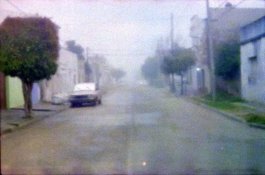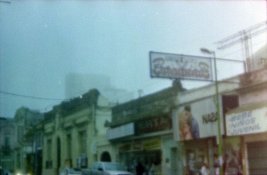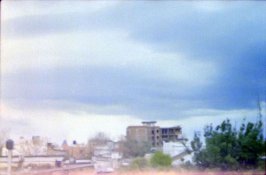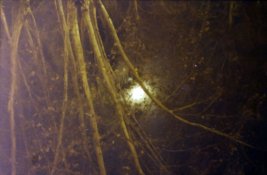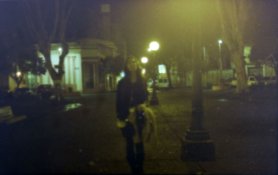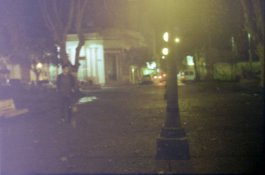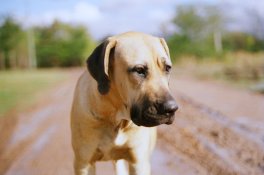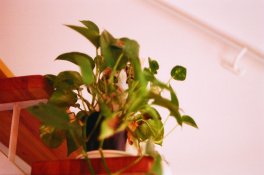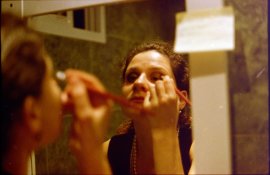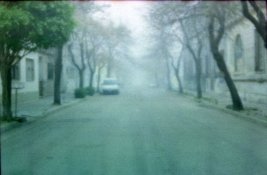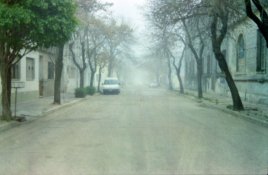Miles51
Member
Hello everyone!! I have some questions regarding C-41 development. I have been developing my film for a while now, with bad to medium results, I have developed about 7 rolls so far, and none have given me satisfactory results. I have multiple issues, the main one being that I do it at home, in my kitchen, with not the best equipment, so temperature control is very difficult (I'm looking into getting a better suited thermometer for the task), but the last couple of rolls I developed have given me awful results, the worst ones so far, and I though it was about time I started looking into what could be the cause of all the problems, because by now simple lack of practice just doesn't cut it 
The biggest problem i'm having is that my negatives turn out very, very, very grainy, and like, foggy. The lighter ones look as if they had been overexposed, which I know they haven't been, and the dark ones have this weird glare that just ruins everything.
Another problem is that because the whole process for me is so "home-made" I can't really pinpoint at which point did things go bad. I develop at home, but then also digitalize my photos by taking pictures of them with my DSLR, because I don't have access to a scanning service and totally don't have money to buy a scanner myself, hehe. So most times I can't tell if the problems come from the taking of the photos, the developing, or the photo of the negative. Though, in these last couple of rolls, I can tell the issue happened either at the moment of taking the picture, or at the moment of the development.
I attach some examples. They are the positive image obtained from the negative in Photoshop CC by inverting and applying Auto Contrast and Auto Tone, no further corrections. They were taken with a Kodacolor 200 roll (expires in 2017), pushed at 400. Developed for 4.15 min at 38ºC (as per the intructions from my kit). I buy a pre-mixed kit, the people at the photo store where I got it told me it's a Kodak kit. It uses Developer, Pre-Bleach (stop bath), Bleach, Fix and Stabilizer. I'm 100% sure the chemicals were all at 38ºC when they were poured in the tank, though there is a possibility one of the water baths was colder.
Also, the first time ever I developed, I made an awful mistake and didn't wash between chemicals, but I kept using them because they looked fine: Developer had a very light tint, but it was consistent with the tint of the water coming out from the tank in the pre-wash, so I guessed that was the reason, and I only re-use developer once. Pre Bleach was clear when I got it, now it's pinkish, but my instructions don't call for a wash between the developer and the pre-bleach. The bleach was a "alien-blood" yellow color (super freaky, I find that color disturbing ), now it's a dark green-yellowish (still with that neon freaky tint
), now it's a dark green-yellowish (still with that neon freaky tint  ). The fixer is colorless, though just a teeny tiny bit whiteish, and the stabilizer is clear, but I see it has a residue building up in the bottom of the bottle.
). The fixer is colorless, though just a teeny tiny bit whiteish, and the stabilizer is clear, but I see it has a residue building up in the bottom of the bottle.
I would also like to take the chance to ask if you guys think my chemical could be bad since I am considering replacing them, even though they should, theoretically, last for about 17 more rolls or so (not the developer, of course).
I add at each photo as much detail as I remember. Mainly I would like to know if these are developing errors or shooting errors, and how I can avoid them in the future =)

This one was taken a foggy morning, see how there is very little detail, and waaaay more grain and noise than there should be at that ISO, even if pushed, I think.

Another one from the same morning

This one was taken on a rainy afternoon. The sky was really gray and dark, not at all how it looks there, but then again, that could be photoshop missing at the white balance.

This one was taken at the park at night, with a tripod. See how it has that white/blue glare or fog on one side?

Same night at the park

Same night.
I thank anyone who answers in advance!! I know I just did a super long post and I really apologize!! I'm just s frustrated at not being able to identify my mistakes so I can correct them
Thanks a lot!!!! <3 <3 <3

The biggest problem i'm having is that my negatives turn out very, very, very grainy, and like, foggy. The lighter ones look as if they had been overexposed, which I know they haven't been, and the dark ones have this weird glare that just ruins everything.
Another problem is that because the whole process for me is so "home-made" I can't really pinpoint at which point did things go bad. I develop at home, but then also digitalize my photos by taking pictures of them with my DSLR, because I don't have access to a scanning service and totally don't have money to buy a scanner myself, hehe. So most times I can't tell if the problems come from the taking of the photos, the developing, or the photo of the negative. Though, in these last couple of rolls, I can tell the issue happened either at the moment of taking the picture, or at the moment of the development.
I attach some examples. They are the positive image obtained from the negative in Photoshop CC by inverting and applying Auto Contrast and Auto Tone, no further corrections. They were taken with a Kodacolor 200 roll (expires in 2017), pushed at 400. Developed for 4.15 min at 38ºC (as per the intructions from my kit). I buy a pre-mixed kit, the people at the photo store where I got it told me it's a Kodak kit. It uses Developer, Pre-Bleach (stop bath), Bleach, Fix and Stabilizer. I'm 100% sure the chemicals were all at 38ºC when they were poured in the tank, though there is a possibility one of the water baths was colder.
Also, the first time ever I developed, I made an awful mistake and didn't wash between chemicals, but I kept using them because they looked fine: Developer had a very light tint, but it was consistent with the tint of the water coming out from the tank in the pre-wash, so I guessed that was the reason, and I only re-use developer once. Pre Bleach was clear when I got it, now it's pinkish, but my instructions don't call for a wash between the developer and the pre-bleach. The bleach was a "alien-blood" yellow color (super freaky, I find that color disturbing
 ), now it's a dark green-yellowish (still with that neon freaky tint
), now it's a dark green-yellowish (still with that neon freaky tint  ). The fixer is colorless, though just a teeny tiny bit whiteish, and the stabilizer is clear, but I see it has a residue building up in the bottom of the bottle.
). The fixer is colorless, though just a teeny tiny bit whiteish, and the stabilizer is clear, but I see it has a residue building up in the bottom of the bottle.I would also like to take the chance to ask if you guys think my chemical could be bad since I am considering replacing them, even though they should, theoretically, last for about 17 more rolls or so (not the developer, of course).
I add at each photo as much detail as I remember. Mainly I would like to know if these are developing errors or shooting errors, and how I can avoid them in the future =)
This one was taken a foggy morning, see how there is very little detail, and waaaay more grain and noise than there should be at that ISO, even if pushed, I think.
Another one from the same morning
This one was taken on a rainy afternoon. The sky was really gray and dark, not at all how it looks there, but then again, that could be photoshop missing at the white balance.
This one was taken at the park at night, with a tripod. See how it has that white/blue glare or fog on one side?
Same night at the park
Same night.
I thank anyone who answers in advance!! I know I just did a super long post and I really apologize!! I'm just s frustrated at not being able to identify my mistakes so I can correct them

Thanks a lot!!!! <3 <3 <3








